Issue № 4
July 2014
Something Happened  Events
Events  Rose
Rose  Song
Song

Once the guys went for a walk in the park. It was winter, and severe biting frost. The pines stood still. Red bark, dark green needles, shining snow - nothing else in the park. Everyone hid from the cold.
— Look, what is it? Misha yelled.
Vika took a closer look — there were small fluffy balls in the snow. Delicate, creamy brown, soft, like a hare coat.
But the guys knew — there are no hares in the park, only pigeons, and introduced squirrels in the summer: but now it's winter!
— What is this? Maybe the cat ate someone?
— Or were the kids walking and lost something?
The children carefully stroked the balls and could not figure out where they came from. They look like fluff, and fur, and cotton. There are no traces around. It doesn't grow on pine trees.
They hid it in their pockets and went on walking, puzzling over an unexpected riddle.
There is frozen thick ice on the river. There are, on the contrary, many traces — human, dog — everyone likes to frolic on the ice.
And the guys did not stay on the shore, too — they slid along the smooth glades, laughing.
Suddenly — the same fluffy lumps! And more and more! Most of all near last year's dried reeds.
They came closer, raised their heads, and were stunned — here it is!
The thick brown sticks, which looked like popsicles in summer, became loose and shabby in winter. From them came the mysterious fluffy lumps.
— It's cattail, I know! — Vika said, — it turns out that fluff comes from it in winter? But how did it get into the pines, far away?
Either the wind drove it, or the birds brought it — the guys could not figure it out.
A light-hearted traveler roams through a forest or field. The traveler enjoys the gentle density of nature. The traveler's spirit is lulled by the sameness of the surrounding overgrowth.
Suddenly wandering gaze stumbles: a feeling
— something happened here.
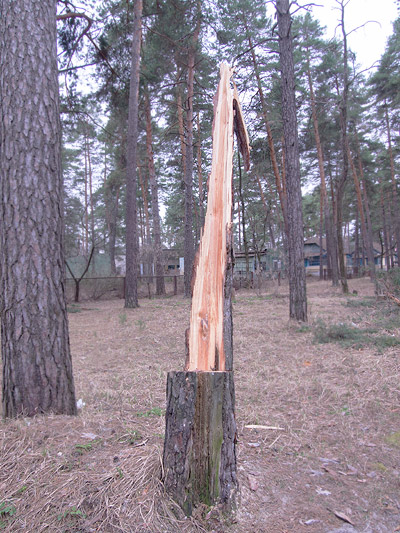
The overgrowth's surface receded a little, and something absurd, mysterious, and unique swarms on the bare bottom.
Where did it come from? The substance of nature condensed, warped, splashed out, and congealed into a clot.
The clot clings and stays in the memory of a human being. It gently strokes the traveler with its spikes and hooks as if trying to say something, to direct the affected body and mind to something.
At the clot, you can feel three suckers, three spines:
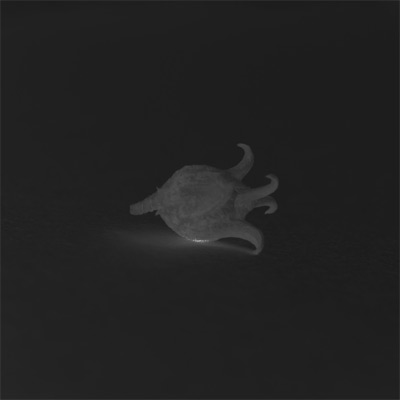
The thorn of events makes us ask in amazement — "Why is this?". The event marks the time, nods at the source, and waits for the story. It is so alien to overgrowths that we simply cannot pass by. The thorn of the event harms our minds and sows doubts about what is known about nature.

Why did the snow form a ball on a branch? Was there an outburst of elements? Why did the tops of the trees dry up?
The hook of absurdity catches the gaze, disturbs and pleases it. In the rhythmic, lawful pattern of a forest, a meadow, or a flock, the clot will always be discovered because of its outlandish, unusual, disturbed appearance.
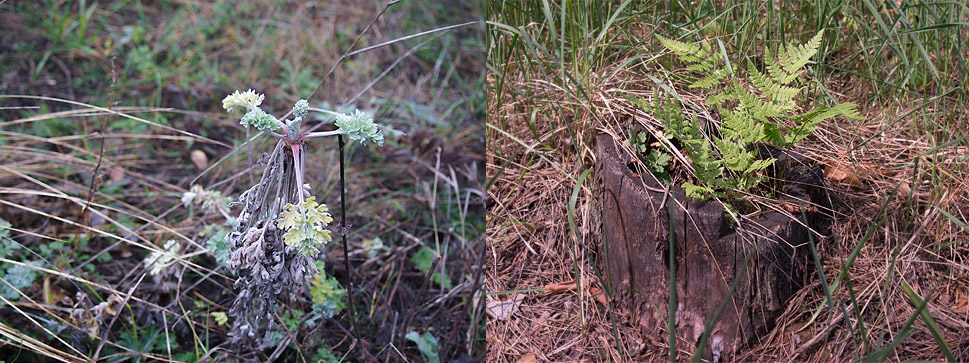
Samples of absurd clots.
The punch of openness, like a silent explosion, cleanses the senses of the body and starts a round dance of nature around the clot.

In this example, you can clearly see how the clot clings to us, first establishing a frame around itself.

If, for us humans, a clot is a thorn of nature, what is it for an overgrowth?
Deficiency or excess? Disease or bloom? Design or coincidence? Breakthrough to freedom or a sign of defeat?
Sometimes there are clots similar to each other; it is from them that all the mysteries must be solved.
The simplest cases confirm: there is no doubt — a clot is an excess of nature, a direct and obvious compaction, an accretion of the tissue of an overgrowth.

Illustration of clots-accretions.
But behind this surplus, there may be a flaw, a hidden cavity?

Clots arising from lack.
It turns out that a clot is a disappearance, decay, death of an overgrowth?
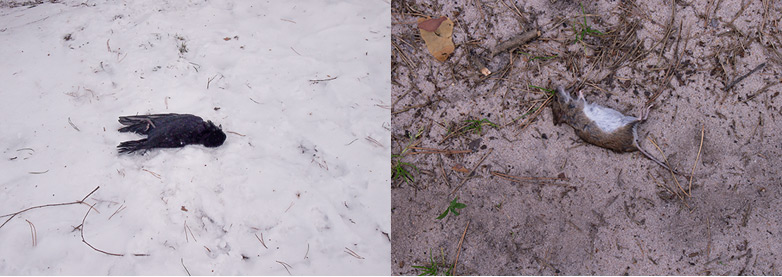
Or just a lively game of easily excitable elements?
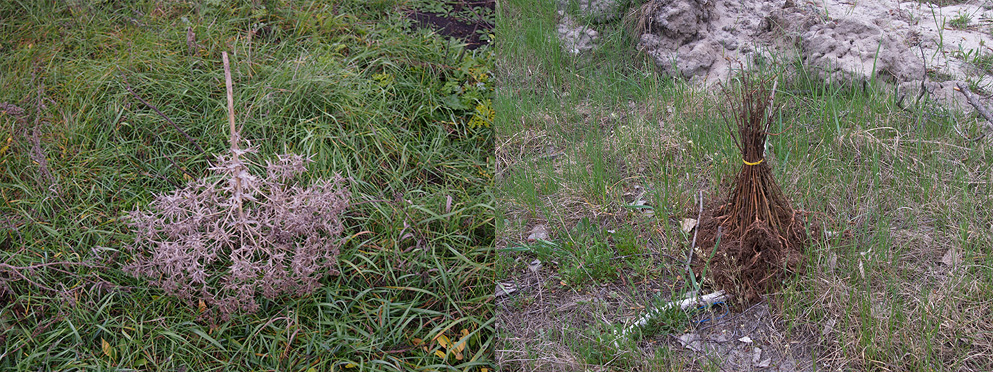
Creeping out of dark lairs, breaking through the surface of overgrowths, clots put their thorns and hooks into us, injecting sweets and poisons.

What is it behind this surface? Where and why do clots emerge? Is this a good word from a peaceful will? Echoes of an indifferent machine tossing and turning in a dream? Silly riddles of glares on the ripples?
The thorn of the clot rips the eye, and the earth leaves from under the feet.


Questions that clots puzzle humans with rarely leave them indifferent. It always seems worth listening to the clots, looking into them carefully, following along with them beyond the surface of nature — and then the latter will speak with a curious mind.
Goethe met three clots on the way to understanding the plant kingdom. The first was a sprouted rosebud (the stem continued growing from the flower's center). The second was a carnation, from the flowers of which, again, whole stalks grew — even with new flowers. Then — a common palm tree (it is worth noting that nature consists of clots entirely in some merciless lands).
Interesting plants captured the attention of the German Naturschauer for a long time. Weaving sight and thought, contemplation and reflection, experience and idea, he formulated the prominent theory of plants metamorphosis.
The poetically inclined scientist was sure that nature speaks to us and through us all the time — but in its own words. Unusual, monstrous fragments of nature turned out to be the loudest, most coherent of these words. Inside individual clots, Goethe heard the boundless thought of nature.
Of course, this might not have happened. Of course, everything could have turned out much gloomier (recall the consequences of the shardwrecks). Of course, you refuse to believe in the veracity of what you heard and even in the very presence of the entity that spoke.
One thing is for sure: having met with a clot, we will carry away its thorns in ourselves. Sooner or later, this engagement will sprout consequences.
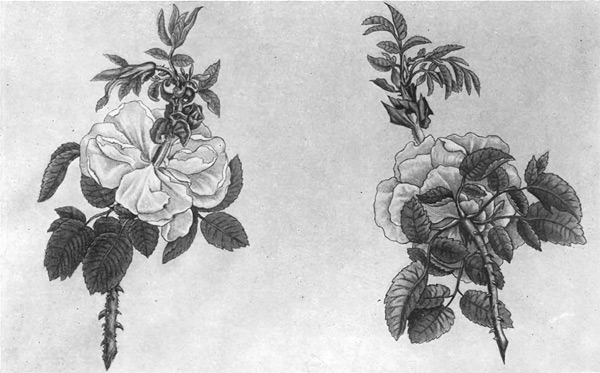
The sprouted rosebud. A plate from the Goethe archive.

A song by the artist Jeanne Dolgova


Look attentively at this image.
Why is one bush white and the other red?
Send your answer to the FJ.
